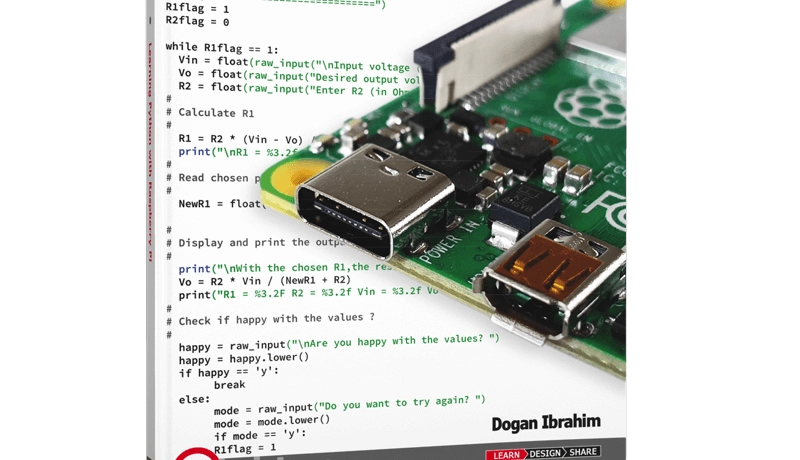For many aspiring technologists, the combination of machine learning (ML), Python, and Raspberry Pi evokes an exhilarating sense of possibilities. Each of these components in isolation represents a potent tool for innovation; when combined, they offer an accessible and powerful means to explore the fascinating world of machine learning. This article is aimed at providing a broad overview of how these technologies interplay and a step-by-step guide to getting started with your machine learning project on a Raspberry Pi using Python.
What are Python, Machine Learning, and Raspberry Pi?
Before we dive into the practical guide, it’s crucial to understand these three components: Python, machine learning, and Raspberry Pi.
Python is a high-level, interpreted programming language renowned for its readability and ease of learning. It’s a widely-used language in many fields, including web development, data analysis, AI, and, notably, machine learning.
Machine learning, a subset of artificial intelligence, involves teaching computers to “learn” from and make decisions or predictions based on data. Machine learning algorithms can analyze a large volume of data, identify patterns, and make predictions based on these patterns, all without explicit programming.
Raspberry Pi is a low-cost, credit card-sized computer that can perform many of the functions a desktop computer can. It’s a fantastic tool for learning, experimenting, and prototyping due to its flexibility, affordability, and supportive community.
Getting Started
Hardware and Software Requirements
- Hardware: Raspberry Pi (at least a Pi 3 Model B, though a Pi 4 is recommended for better performance), micro SD card (16GB minimum), power supply, keyboard, mouse, and monitor.
- Software: Raspberry Pi OS, Python (which comes pre-installed with Raspberry Pi OS), and Python libraries like NumPy, Pandas, Scikit-learn, and TensorFlow.
Setting Up Your Raspberry Pi
Begin by installing Raspberry Pi OS onto your micro SD card. Instructions on how to do this can be found on the Raspberry Pi documentation.
After setting up your Raspberry Pi OS, connect the peripherals (mouse, keyboard, and monitor), and boot your Pi.
Setting Up Your Python Environment
The Raspberry Pi OS comes with Python pre-installed, but you’ll need to install some additional libraries to get started with machine learning. Open the terminal (command line interface) and enter the following commands:
- Update the package list:
sudo apt-get update - Install pip (Python package installer):
sudo apt-get install python3-pip - Install necessary libraries:
pip3 install numpy pandas scikit-learn tensorflow
An Example Machine Learning Project
To help you understand the process, let’s run a simple ML project using a popular dataset: the Iris flower dataset. This dataset includes measurements of 150 iris flowers from three different species.
- Loading the Data: Python’s Scikit-learn library provides easy access to the Iris dataset.
from sklearn import datasets
iris = datasets.load_iris()Data Exploration: Analyze the data to understand its structure.
import pandas as pd
df = pd.DataFrame(data=iris.data, columns=iris.feature_names)
df['target'] = iris.target
print(df.head())Data Splitting: Split the dataset into a training set and a test set. This helps evaluate the model’s performance on unseen data.
from sklearn.model_selection import train_test_split
X_train, X_test, Y_train, Y_test = train_test_split(df[iris.feature_names], df['target'], random_state=0)Model Training: Using the training data, you can train a machine learning model. Here, we use a simple decision tree classifier.
from sklearn.tree import DecisionTreeClassifier
classifier = DecisionTreeClassifier(max_depth=2, random_state=0)
classifier.fit(X_train, Y_train)Model Testing: Test the model on the test data and evaluate its performance.
classifier.score(X_test, Y_test)This is a simple overview of a machine learning project using Python and Raspberry Pi. Of course, real-world applications often involve more complex data and models, but this provides a foundation upon which you can build and explore further.
Conclusion
Python, Raspberry Pi, and machine learning together create an affordable, accessible, and powerful platform for tech enthusiasts, students, and professionals alike. This guide is meant to provide a foundation, a spark to ignite your journey into this exciting field. As you advance, remember to tap into the vast resources and communities available online. The world of machine learning is vast, and there’s always something new to learn and explore.
Happy coding!
